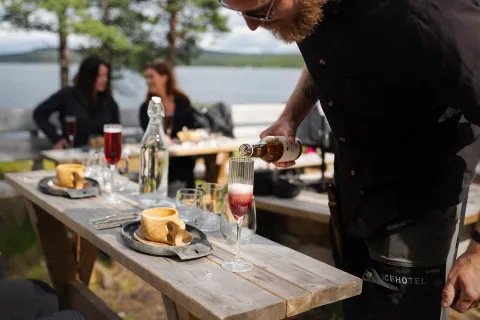Experience
our arctic activities
ICEHOTEL is so much more than a hotel. Here you can also find exciting activities year-round. Each season has its own charm, so depending on what you want to experience there is a large selection of things to do if you visit us.
In summer, a lot of our activities are centered around the Torne River. We offer boat and fishing tours, as well as our exciting Torne River Rafting tour. Other than that there are several outdoor food experiences to choose from, like our Wilderness Dinner and Wilderness Lunch. Or why not challenge yourself and your friends or family with a visit to our Challenge Park - An exhilarating nature experience among the treetops!
The winter is the perfect time of year to see the Northern lights around ICEHOTEL, and why not experience it from a snowmobile on our Northern Lights Safari, or at an overnight excursion in one of our wilderness camps. In winter, the dog sledding, as well as our snowmobile tours are very popular, and we think they are a perfect activity for those of you looking for a fast-paced tour surrounded by the magical Arctic nature. For those of you who are looking for a more relaxed visit to ICEHOTEL, we always recommend the Sauna Ritual or our popular ice sculpting class.
A visit to ICEHOTEL is on many people's bucketlists, and we are here to help you create great memories that will last a lifetime!

Winter activities
ICEHOTEL is the obvious winter destination when you visit the Arctic. For those who dream of adventure we offer many exciting activities, like ice sculpting, snowmobile tours, cross country skiing, dog sledding and food tours where you get to enjoy delicious food made with local produce.

Summer activities
At ICEHOTEL we offer exciting activities year-round, and in summer the Torne River inviets you to go on fishing adventures, try river rafting, enjoy a delicious meal around the campfire in the wilderness, or simply enjoy the beautiful midnight sun.